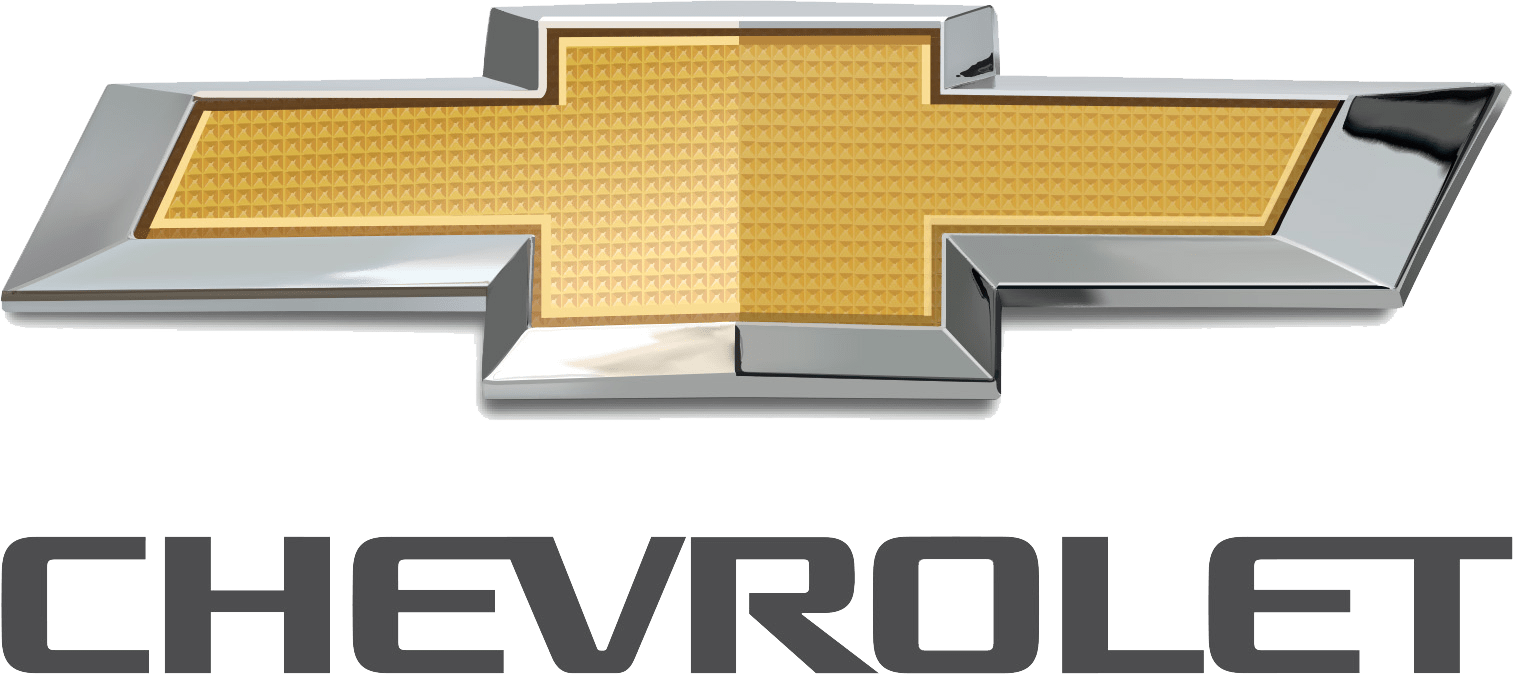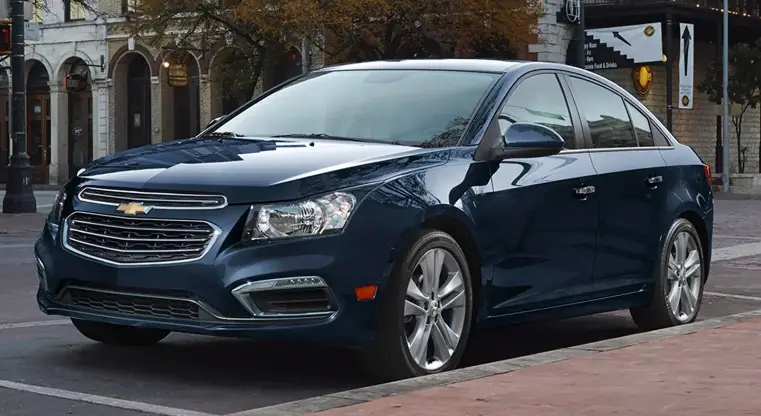
2016 Chevrolet Cruze Owner’s Manual
With its sleek look, increased fuel efficiency, and upgraded features, the 2016 Chevrolet Cruze emerged as a sophisticated and technologically sophisticated compact car. The 2016 Cruze was designed to provide a superior driving experience. It featured a sleek and aerodynamic body, a roomy and pleasant cabin, and a variety of effective engine options, including a new turbocharged engine. With the help of cutting-edge technology like the touchscreen MyLink infotainment system and available safety features like lane departure warning and blind-spot monitoring, the Cruze of 2016 aimed to raise the bar for fashion, innovation, and functionality in its market.
Seats and Restraints
Head Restraints
The vehicle’s front and rear seats have adjustable head restraints in the outboard seating positions.
Warning: With head restraints that are not installed and adjusted properly, there is a greater chance that occupants will suffer a neck/ spinal injury in a crash. Do not drive until the head restraints for all occupants are installed and adjusted properly.
Adjust the head restraint so that the top of the restraint is at the same height as the top of the occupant’s head. This position reduces the chance of a neck injury in a crash. The height of the head restraint can be adjusted. To raise or lower the head restraint, press the button located on the side of the head restraint, pull up or push the head restraint down, and release the button. Pull and push on the head restraint after the button is released to make sure that it is locked in place. The front seat outboard head restraints are not removable.
Rear Seats
The vehicle’s rear seats have adjustable head restraints in the outboard seating positions. The height of the head restraint can be adjusted. Pull the head restraint up to raise it. Try to move the head restraint to make sure it is locked in place. To lower the head restraint, press the button located on the top of the seatback and push the head restraint down. Try to move the head restraint after the button is released to make sure it is locked in place. The rear outboard head restraints are designed to be removed.
Front Seats
Seat Adjustment
Warning: You can lose control of the vehicle if you try to adjust a driver’s seat while the vehicle is moving. Adjust the driver seat only when the vehicle is not moving.
To adjust a manual seat:
- Pull the handle at the front of the seat.
- Slide the seat to the desired position and release the handle.
- Try to move the seat back and forth to be sure it is locked in place.
Seat Height Adjuster
If equipped, move the lever up or down to manually raise or lower the seat.
Power Seat Adjustment
To adjust the power driver seat, if equipped:
- Move the seat forward or rearward by sliding the control forward or rearward.
- Raise or lower the front part of the seat cushion by moving the front of the control up or down.
- Raise or lower the entire seat by moving the rear of the control up or down.
Reclining Seatbacks
Warning: If either seatback is not locked, it could move forward in a sudden stop or crash. That could cause injury to the person sitting there. Always push and pull on the seatbacks to be sure they are locked.
To recline a manual seatback:
- Lift the lever. If necessary, move the safety belt out of the way to access the lever.
- Move the seatback to the desired position, then release the lever to lock the seatback in place.
- Push and pull on the seatback to make sure it is locked.
To return the seatback to an upright position:
- Lift the lever fully without applying pressure to the seatback, and the seatback returns to the upright position.
- Push and pull on the seatback to make sure it is locked.
To recline a power seatback, if equipped:
- Tilt the top of the control rearward to recline.
- Tilt the top of the control forward to raise.
Warning: Sitting in a reclined position when the vehicle is in motion can be dangerous. Even when buckled up, the safety belts cannot do their job. The shoulder belt will not be against your body. Instead, it will be in front of you. In a crash, you could go into it, receiving neck or other injuries. The lap belt could go up over your abdomen. The belt forces would be there, not at your pelvic bones. This could cause serious internal injuries. For proper protection when the vehicle is in motion, have the seatback upright. Then sit well back in the seat and wear the safety belt properly.
Do not have a seatback reclined if the vehicle is moving.
Heated Front Seats
Warning: If you cannot feel temperature change or pain to the skin, the seat heater may cause burns. To reduce the risk of burns, people with such a condition should use care when using the seat heater, especially for long periods of time. Do not place anything on the seat that insulates against heat, such as a blanket, cushion, cover, or similar item. This may cause the seat heater to overheat. An overheated seat heater may cause a burn or may damage the seat.
Remote Start Heated Seats
When it is cold outside, the heated seats can be turned on automatically during a remote vehicle start. The heated seats will be canceled when the ignition is turned on. Press the control to use the heated seats after the vehicle is started. The heated seat indicator lights on the control do not turn on during a remote start. The temperature performance of an unoccupied seat may be reduced. This is normal. The heated seats will not turn on during a remote start unless the heated seat feature is enabled in the vehicle personalization menu.
Rear Seats
The rear seatbacks can be folded.
To fold the rear seatbacks:
- Place the front seatbacks in the upright position.
Caution: Folding a rear seat with the safety belts still fastened may cause damage to the seat or the safety belts. Always unbuckle the safety belts and return them to their normal stowed position before folding the rear seat. - Unbuckle the rear safety belt and make sure the safety belt is in the guide on top of the seatback.
- Reach under the safety belt and pull the lever on top of the seatback to unlock the seatback. A tab near the seatback lever moves forward when the seatback is unlocked.
- Fold the seatback forward.
- Stow the safety belt in the belt stowage clip.
- Repeat the steps for the other seatback, if desired.
To raise the seatback:
Warning: A safety belt that is improperly routed, not properly attached, or twisted will not provide the protection needed in a crash. The person wearing the belt could be seriously injured. After raising the \rear seatback, always check to be sure that the safety belts are properly routed and attached, and are not twisted.
- Make sure the safety belt is in the belt stowage clip.
- Lift the seatback up and push it rearward firmly until it locks into place. Use two hands to press firmly against the seatback. Apply enough pressure to both sides of the seatback to lock it when returning it to its upright position. A tab near the seatback lever retracts when the seatback is locked in place.
Warning: If the seatback is not locked, it could move forward in a sudden stop or crash. That could cause injury to the person sitting there. Always pull forward on the top of the seatback at the area of the latch to be sure it is locked. - When the seatback is raised and locked into place, the red portion on the release buttons on both outboard sides will not be visible. Push and pull on the seatback to make sure it is locked into position and visually check that both rear seatback tabs are retracted and no red is visible before driving.
Keep the seat in the upright locked position when not in use.
Rear Seat Armrest
The rear seat has an armrest in the center of the seatback. Lower the armrest to access the two cupholders. To fold, lift the armrest up and push it rearward until it is flush with the seatback.
Heated Rear Seats
Warning: If you cannot feel temperature change or pain to the skin, the seat heater may cause burns.
If available, the buttons are on the rear of the center console.
Safety Belts
This section describes how to use safety belts properly, and some things not to do.
Warning: Do not let anyone ride where a safety belt cannot be worn properly. In a crash, if you or your passenger(s) are not wearing safety belts, injuries can be much worse than if you are wearing safety belts. You can be seriously injured or killed by hitting things inside the vehicle harder or by being ejected from the vehicle. In addition, anyone who is not buckled up can strike other passengers in the vehicle. It is extremely dangerous to ride in a cargo area, inside or outside of a vehicle. In a collision, passengers riding in these areas are more likely to be seriously injured or killed. Do not allow passengers to ride in any area of
the vehicle that is not equipped with seats and safety belts. Always wear a safety belt, and check that all passenger(s) are restrained properly too.
This vehicle has indicators as a reminder to buckle the safety belts. This vehicle may have the Safety Belt Assurance System, which may prevent the vehicle from shifting out of P (Park).
FAQ’s
A: The 2016 Chevrolet Cruze had a starting price of around $16,620.
A: The 2016 Cruze was available exclusively as a sedan.
A: The 2016 Cruze offered a turbocharged 1.4-liter four-cylinder engine as its standard engine, delivering improved fuel efficiency and performance.
A: The 2016 Cruze was known for its impressive fuel efficiency, with an estimated combined MPG ranging from 30 to 35, depending on driving conditions and configuration.
A: The 2016 Cruze featured standard safety features like stability control, antilock brakes, front and side airbags, with available options including forward collision alert and rear cross-traffic alert.
A: The 2016 Cruze showcased advanced technology such as the Chevrolet MyLink infotainment system with a 7-inch touchscreen, smartphone integration, and available navigation.
A: The 2016 Cruze was available in various trim levels, including L, LS, LT, and Premier trims, each offering different features and options.
A: The 2016 Cruze featured a comfortable and well-designed interior with ample seating space for up to five passengers and user-friendly controls.
A: Yes, the 2016 Cruze offered available advanced driver assistance features such as lane departure warning, blind-spot monitoring, and rear park assist.
A: The 2016 Cruze was praised for its refined and composed ride, responsive handling, and reduced road noise, contributing to a comfortable driving experience.
A: The 2016 Cruze exhibited a modern and sleek exterior design, featuring crisp lines, a bold front grille, and stylish lighting elements.
A: The 2016 Cruze faced competition from other compact cars such as the Honda Civic, Toyota Corolla, Ford Focus, and Hyundai Elantra.
A: Yes, the 2016 Cruze offered various packages and standalone options for customization, allowing buyers to personalize their vehicle to suit their preferences.
A: The 2016 Cruze generally received average to above-average reliability ratings, and ownership costs varied based on factors like maintenance, fuel, and insurance.
A: The 2016 Cruze was often considered a good value due to its combination of features, fuel efficiency, comfortable interior, and competitive starting price.
Useful Links
Chevrolet Suburban 2021 User Manual
Chevrolet Traverse 2020 User Manual

